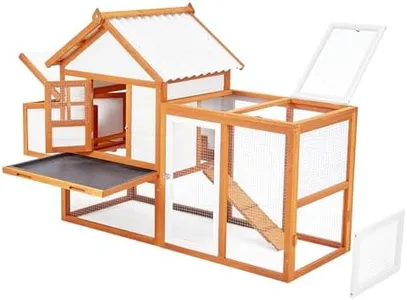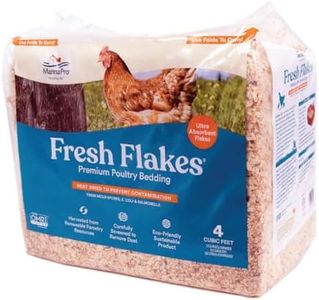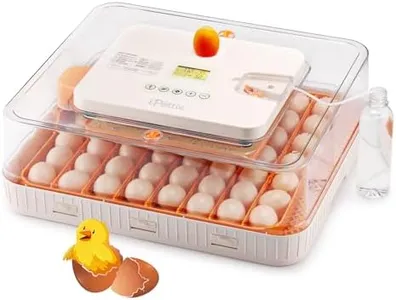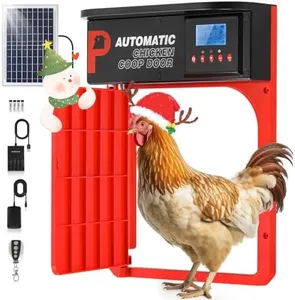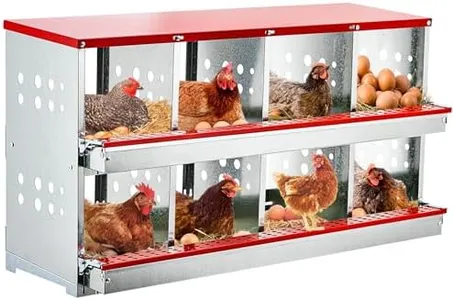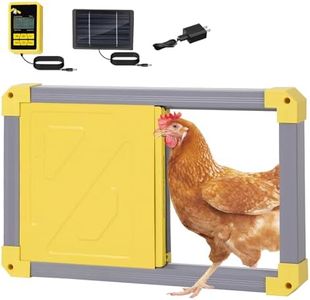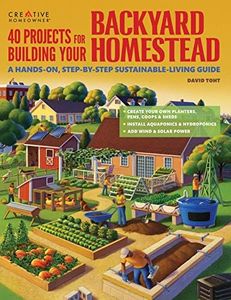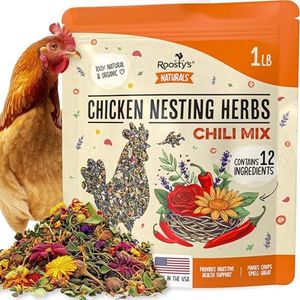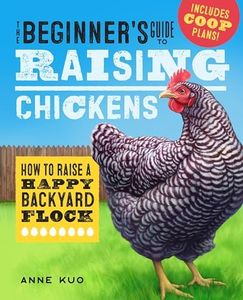We Use CookiesWe use cookies to enhance the security, performance,
functionality and for analytical and promotional activities. By continuing to browse this site you
are agreeing to our privacy policy
10 Best Chicken Coop Plans 2025 in the United States
How do we rank products for you?
Our technology thoroughly searches through the online shopping world, reviewing hundreds of sites. We then process and analyze this information, updating in real-time to bring you the latest top-rated products. This way, you always get the best and most current options available.

Buying Guide for the Best Chicken Coop Plans
Choosing the right chicken coop plans is essential for ensuring the health, safety, and comfort of your chickens. A well-designed coop will protect your chickens from predators, provide adequate ventilation, and make it easy for you to maintain cleanliness. When selecting chicken coop plans, consider the number of chickens you plan to keep, the climate in your area, and the space you have available. Here are some key specifications to consider when choosing the best chicken coop plans for your needs.SizeThe size of the chicken coop is crucial because it determines how many chickens you can comfortably house. Chickens need enough space to move around, roost, and lay eggs. A general rule of thumb is to provide at least 3-4 square feet of indoor space per chicken and 8-10 square feet of outdoor run space per chicken. If you have a small backyard or only a few chickens, a smaller coop will suffice. For larger flocks, you'll need a bigger coop to prevent overcrowding and stress among the birds.
VentilationProper ventilation is important to maintain a healthy environment inside the coop. Good airflow helps to remove moisture, ammonia, and heat, which can build up and cause respiratory issues or other health problems for your chickens. Look for plans that include windows, vents, or other openings that can be adjusted to control airflow. In colder climates, ensure that the ventilation does not create drafts that could chill the chickens.
Predator ProtectionPredator protection is essential to keep your chickens safe from animals like raccoons, foxes, and hawks. The coop should be constructed with sturdy materials and include features like secure latches, buried wire mesh around the perimeter, and elevated floors to prevent predators from digging underneath. If you live in an area with a high risk of predators, prioritize plans that offer robust security measures.
Ease of CleaningA clean coop is vital for the health of your chickens and to prevent the spread of diseases. Look for plans that include features like removable roosts, droppings trays, and easy access doors that make it simple to clean the coop regularly. Consider the materials used in the construction, as some surfaces are easier to clean and disinfect than others.
Nesting BoxesNesting boxes provide a comfortable and private space for hens to lay their eggs. Each nesting box should be about 12x12 inches and placed in a quiet, dark area of the coop. The number of nesting boxes you need depends on the size of your flock, with one box for every 3-4 hens being a good guideline. Ensure the plans include easy access to the nesting boxes for egg collection.
Roosting BarsChickens prefer to sleep off the ground on roosting bars. These bars should be placed higher than the nesting boxes to encourage chickens to roost there instead of in the boxes. The roosting bars should be about 2 inches wide and provide at least 8-10 inches of space per chicken. Look for plans that include sturdy and appropriately placed roosting bars.
Weather ProtectionThe coop should provide adequate protection from the elements, including rain, snow, wind, and extreme temperatures. Look for plans that include a solid roof, insulated walls, and weatherproof materials. In hot climates, ensure there is enough shade and ventilation to keep the chickens cool. In cold climates, consider additional insulation and a design that minimizes drafts.
Most Popular Categories Right Now
